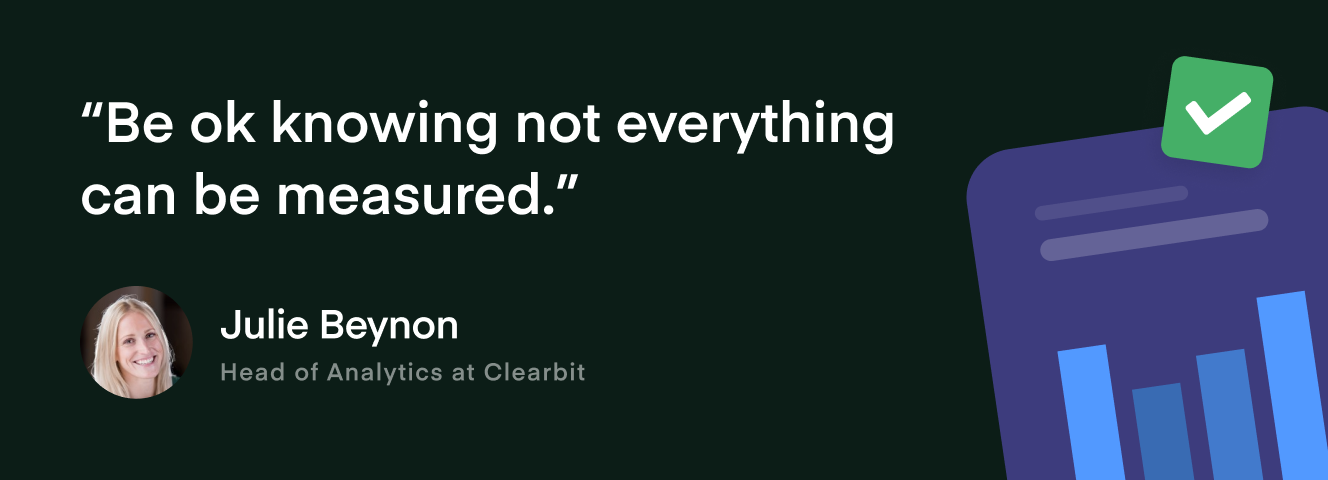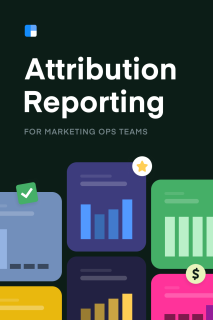Chapter 4
3 minutes
Measuring the unmeasurable
Think about the last time you were evaluating a tool, maybe considering switching marketing automation platforms. Do you go with HubSpot? Marketo? Something new you haven’t even heard of before? To make a decision, you probably asked your friends or a Slack group for recommendations.
Buyers like you are doing more research outside of traditional channels by reaching out to sources they trust, making it increasingly difficult to track every customer touchpoint. The buyer journey simply isn’t linear.

While your attribution model will never measure everything (marketing strategy is part art, part science, after all), you can find ways to intelligently collect information. We put together suggestions to help you gather qualitative data points in addition to metrics from attribution reporting to optimize your marketing campaigns and drive real revenue.
Listen to recordings of sales calls
Sales calls reveal critical information such as how a prospect found your company or what challenges they face in their role. While collecting these insights can be difficult to operationalize, a call recording tool like Gong makes it easier. Using Gong, you can search the call recording library by keywords or phrases like, “How did you hear about us?” or “marketing attribution.”
Having a more complete picture of the customer journey enables you to determine which marketing channels to prioritize. For example, if you see a recurring trend that prospects are hearing about your product on LinkedIn, there may be an opportunity to focus your marketing efforts on partnering with more groups and individuals in the LinkedIn community.
Add a “how did you hear about us?” field to your forms
We’re all for shortening forms, but adding an optional field asking prospects how they heard about your brand is relatively low friction, but a high value add. This can reveal unconventional sources that you may not have considered.
Adding this as an open text field will allow you to get more granular and specific information. However, it will be harder to use in reporting due to the variance in answers. If you want to use this information more systematically, a picklist may be a better option.
Track mentions in Slack and on social channels
As a marketer, it can be difficult to hear what people really think about your brand or product (especially for Boston’s MBTA social media manager), but it’s necessary. Your audience is having conversations about your brand and you need to be clued in to make informed business decisions.
With the rise in Slack communities for professions and interests of all types, it’s likely your target audience is in at least one group outside of their organization. They may be in a group tailored to their area of focus like marketing ops or demand gen, or perhaps, in a group like women in marketing. Join these groups and set up notifications (preferences → my keywords) to track keywords like your company name, product line, and more.
In addition to Slack, Twitter is a great channel to monitor real, unfiltered opinions. There are many social monitoring tools that help with keyword and hashtag tracking.
Following relevant keywords and hashtags provides visibility into what people are saying about your brand and how they are thinking about solving their challenges. Having insight into social channels and communities also enables you to engage, making it a two-way, rather than one-way, conversation.
Conduct surveys
Conduct surveys to better understand your audience and where and how they buy. These can be conducted at events or as larger brand awareness campaigns. You can gain quick insights by sending an email to your existing customers asking them how they found your product or service, or by using polls on LinkedIn. All of these interactions will help you to better understand buying behavior and where to focus your energy.
While it can be frustrating not being able to track it all, hopefully, these suggestions give you new ideas on how to collect additional attribution data points!

